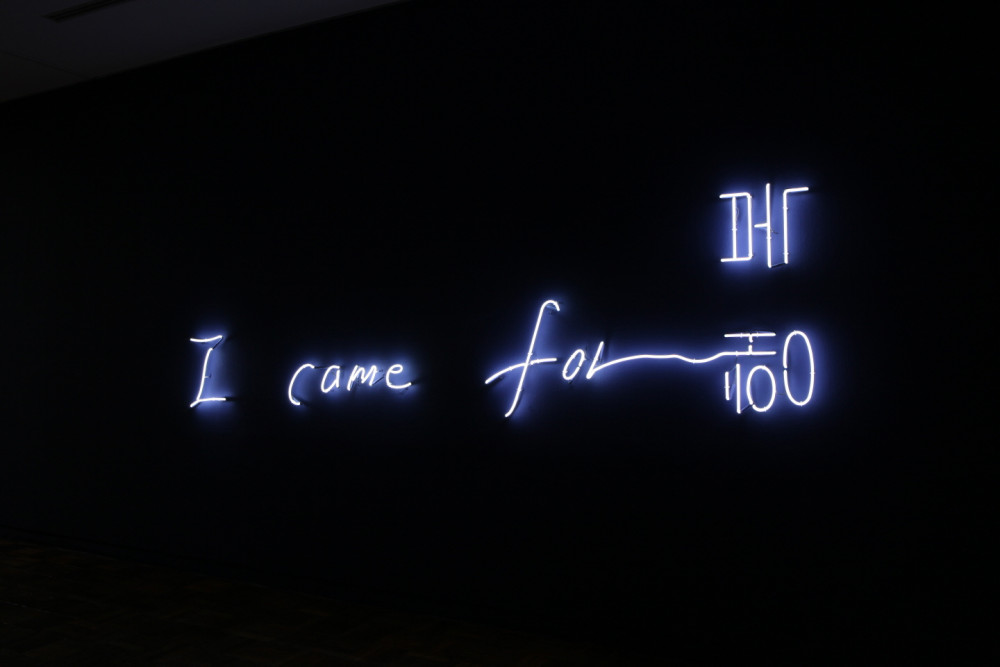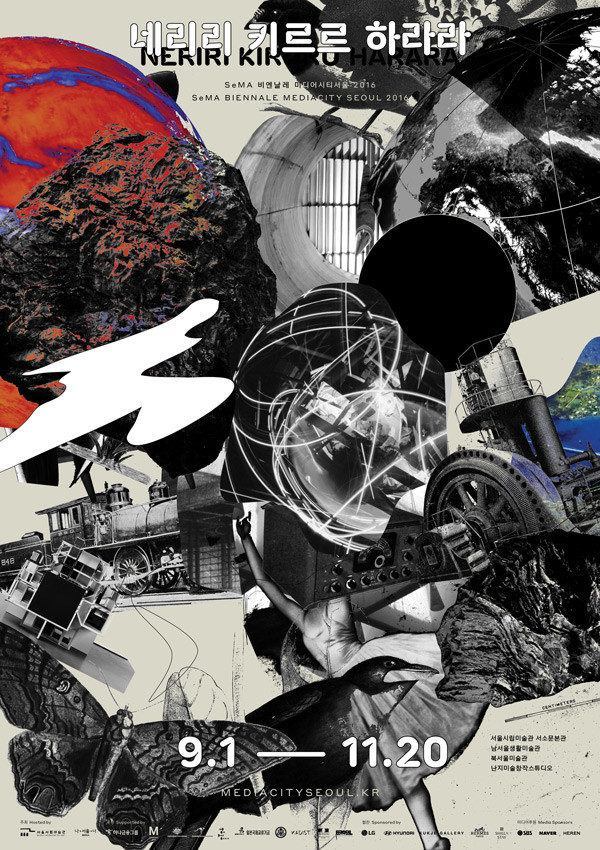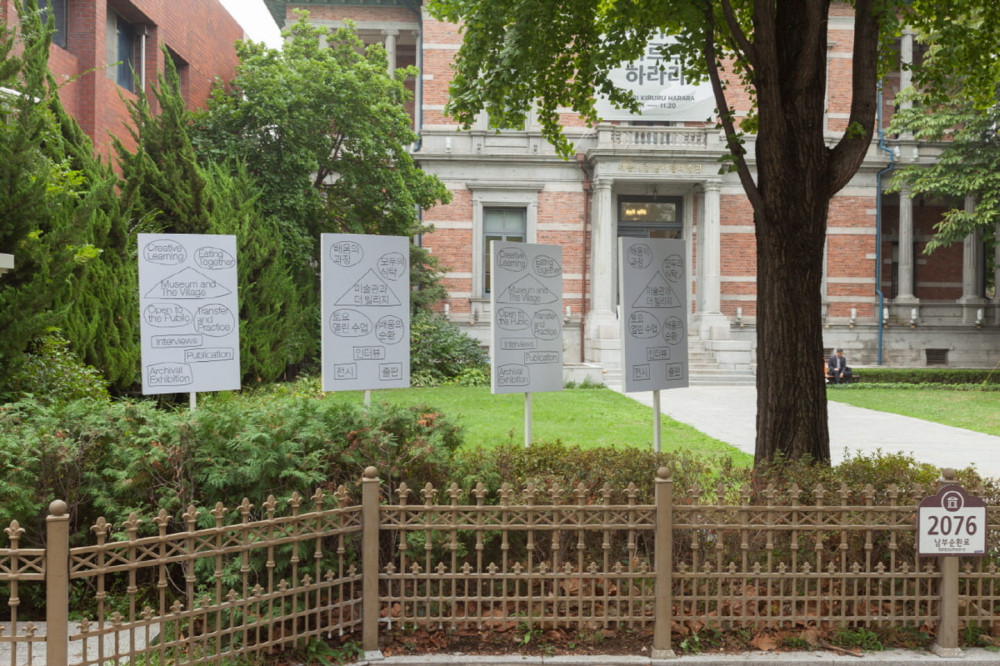
As the light in I came for Happiness/Submission turns on and off, the words Happiness and Submission alternately disappear and reappear. This can be interpreted in multiple ways: that one is the opposite of the other; that the two mean the same thing; or that one is the cause of the other. The irony of such different meanings is at once a momentary truth and an imagination or auditory hallucination/illusion. It ultimately reveals the limits of language and the restraints of material strictness. What is notable as much as the opposing relation of Happiness/Submission is the paradox that viewers have arrived here in pursuit of such conflicts. The effort of constantly questioning the paradox of Happiness/Submission seems to finely fill up the gap between the two oppositional words. The different language structures of Korean and English also evoke a new, different and imaginary dimension of language through the crisscrossing arrangement of the two. Neon, the artwork’s main medium, contributes to increased imaginations of this kind.







